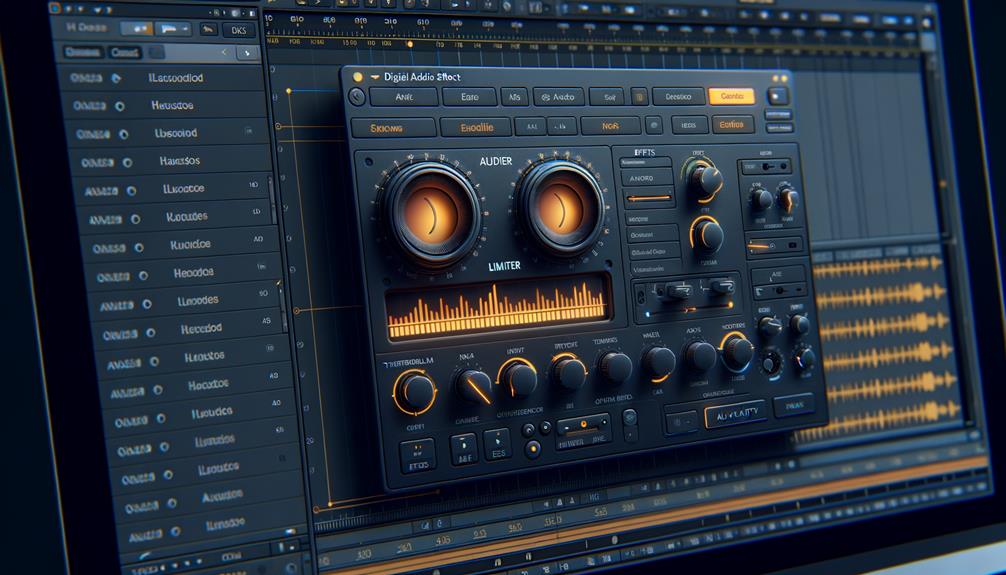No products in the cart.
When it comes to audio editing, sometimes the volume of your recording just doesn’t quite measure up to your expectations. You may find yourself in need of a quick fix to boost the overall sound without sacrificing quality.
In Audacity, there are several effective methods you can use to achieve this. Whether it’s adjusting the gain slider, applying the Amplify effect, or employing compression techniques, each approach offers its own unique benefits.
By exploring these options, you can ensure that your audio projects are heard loud and clear.
Contents
hide
Key Takeaways
- Adjusting the Gain Slider can increase or decrease volume in Audacity.
- The Gain Slider applies volume changes to the entire track.
- Normalizing the audio helps achieve balanced volume levels across audio files.
- The Amplify effect can be used to further adjust volume after normalizing.
Adjusting the Gain Slider
To adjust the Gain Slider in Audacity, simply move it towards the + sign to increase the volume or towards the – sign to decrease it. This slider is located on the left-hand side of the editing timeline in Audacity.
When you modify the Gain Slider, the volume change applies to the entire track, making it an efficient tool for making small volume adjustments across the board. The maximum gain boost achievable from the Gain Slider is +36 dB, while the maximum reduction is -32 dB.
It’s important to note that this slider is particularly useful for subtle volume changes, and for more significant alterations, other effects like the Amplify effect in Audacity or Normalize should be considered.
The Gain Slider can also be used in conjunction with the make-up gain feature to achieve the desired volume levels.
Normalizing the Audio
Normalizing the audio in Audacity involves using the ‘Effect’ menu to select ‘Normalize’ and then setting the desired peak amplitude level. This process ensures that the volume of the audio track is adjusted to a consistent level across different audio files.
When normalizing the audio, follow these steps:
- Open the audio file in Audacity and navigate to the ‘Effect’ menu.
- Choose the ‘Normalize’ option from the dropdown menu.
- Set the desired peak amplitude level, keeping in mind the potential for background noise amplification.
- Preview the normalized audio to ensure that the volume is consistent and meets your requirements.
Normalizing the audio is particularly useful for addressing quiet parts in the audio track, ensuring that they’re brought up to a level that matches the rest of the content. It helps in achieving a balanced and consistent volume level across multiple audio files.
Using the Amplify Effect

After normalizing the audio to achieve a consistent volume level, the next step is to utilize the ‘Amplify’ effect in Audacity to further adjust the volume of the selected audio.
To do this, highlight the desired audio clip and select ‘Amplify’ from the effects menu.
A dialog box will appear, allowing you to adjust the amplification using a slider or by entering a specific dB number. The amplification box displays the dB increase required to reach 0.0 dB after applying the effect, giving you precise control over the volume boost.
It’s important to note that changing the new peak amplitude will affect the amplification when using the ‘Amplify’ effect.
Additionally, the effect alters the volume of both left and right channels equally in Audacity, ensuring a balanced boost in volume.
Applying Compression Techniques
Consider applying compression techniques to further refine the volume levels of your audio track in Audacity. Compression can help control the dynamic range of your audio, making quieter sounds louder and louder sounds quieter, resulting in a more consistent volume level. Here’s how you can effectively apply compression in Audacity:
- Use the Compressor Effect: Navigate to the ‘Effect’ menu and select ‘Compressor’ to access the compression tool in Audacity.
- Adjust the Threshold: Set the threshold to control the level at which the compression effect starts to be applied. Lowering the threshold will apply compression to a wider range of audio, while raising it will limit the compression to louder sounds.
- Set the Ratio: Determine the amount of compression applied by adjusting the ratio. A higher ratio means more compression will be applied to the audio.
- Experiment with Makeup Gain, Attack, and Release: After applying compression, use makeup gain to increase the overall volume. Additionally, experiment with the attack and release settings to fine-tune the compression effect and achieve the desired audio dynamics.
Utilizing the Limiter Effect


To further refine the volume levels of your audio track in Audacity, after applying compression techniques, you can now explore the effective utilization of the Limiter effect. The Limiter effect in Audacity acts as a hard limiter, preventing audio from exceeding a set dB level, thus reducing the risk of clipping or distortion. By adjusting the threshold and input gain settings, you can boost the volume of your track using the Limiter effect, particularly useful for amplifying low-volume sections while maintaining a controlled peak level. It’s essential to preview and fine-tune the settings to achieve the desired volume increase without introducing unwanted artifacts.
| Action | Description |
|---|---|
| Threshold | Set the dB level above which the limiting will take effect |
| Input Gain | Adjust the input signal level to increase overall volume |
| Output Level | Monitor the peak level to ensure controlled volume increase |
Frequently Asked Questions
How Do I Make Audio Louder in Audacity?
To make audio louder in Audacity, open the software and select the audio track you want to enhance. Then, navigate to the “Effect” menu and choose “Amplify.” Adjust the amplification level to boost the volume and maximize the audio level.
How Do I Increase the Volume of a Recording?
To increase the volume of a recording in Audacity, use the Amplify tool for specific sections, apply the Normalization process for consistent levels, and consider Compression, Equalization, Volume envelope, and Peak limiting for advanced volume control.
How Do You Adjust the Volume in Audacity Recording?
To adjust the volume in Audacity recordings, utilize the Amplify options for precise sound level control. These volume boosting methods offer advanced audio enhancement tips and level adjustment strategies, ensuring optimal volume adjustment techniques for your recordings.
Why Is My Audacity Volume so Low?
If your Audacity volume is low, troubleshoot by checking input levels, understanding decibel levels, and amplifying sound. Enhance audio quality by using the Limiter Effect, fading up and down, and preventing distortion for improved sound clarity.
Conclusion
In conclusion, increasing the volume in Audacity can be achieved through various methods. These include adjusting the gain slider, normalizing the audio, using the amplify effect, applying compression techniques, and utilizing the limiter effect.
By employing these techniques, you can effectively adjust the volume of your audio tracks. This will help you meet your desired levels and ensure optimal sound quality in your recordings.




